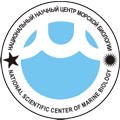 |
A.V. Zhirmunsky National Scientific Center of Marine Biology, Far Eastern Branch, Russian Academy of Sciences (NSCMB FEB RAS) is a scientific, environmental, and educational organization. The main activities of the NSCMB FEB RAS are as follows:
|
Historical Background
A.V. Zhirmunsky National Scientific Center of Marine Biology, Far Eastern Branch, Russian Academy of Sciences (NSCMB FEB RAS), was founded on January 1, 1970, as the Institute of Marine Biology (hereinafter referred to as the Institute) within the Far Eastern Scientific Center of the USSR Academy of Sciences. However, its history began a little earlier. On September 9, 1966, at the initiative of the Siberian Branch of the USSR Academy of Sciences, the Presidium of the USSR Academy of Sciences adopted a resolution establishing the Department of Marine Biology within the Far Eastern Branch of the USSR Academy of Sciences. Aleksey Viktorovich Zhirmunsky, Cand. Sci. (Biol.), was appointed the Head of the Department to address key issues and create the future Institute of Marine Biology. Oleg Grigoryevich Kussakin, Cand. Sci. (Biol.), was appointed his Deputy. Both became academicians of the USSR Academy of Sciences/RAS subsequently.
 |
 |
It was A.V. Zhirmunsky who assembled a team of like-minded professionals, true champions of science, and talented researchers. The establishment of the Department, and later the Institute, was widely supported by leading Soviet scientists. The focus was on experimental research, as well as on the study of coastal zones, which had previously received undeservedly little attention. Scientists from Moscow, Leningrad, Minsk, Kazan, Gorky, and many other cities came to what would become the Institute. It is difficult to overestimate the role of Aleksey Viktorovich in the organization and development of the Institute. He headed it for nearly 20 years from its origin. In accordance with Resolution no. 212 of the Presidium of the Russian Academy of Sciences dated September 20, 2005, the Institute was named after Academician A.V. Zhirmunsky.
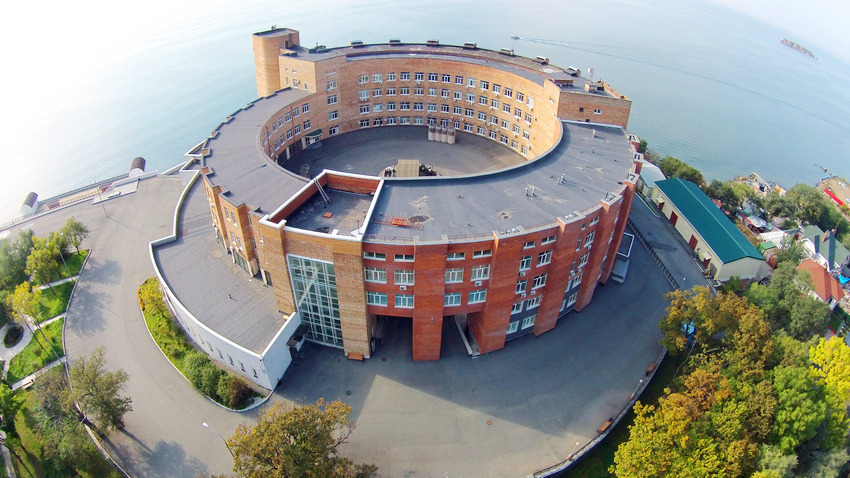
The life and fate of the Institute have reflected the destinies of many generations. Its organizational structure has changed repeatedly, depending on the scope of research and the development of science. On January 20, 2016, the A.V. Zhirmunsky Institute of Marine Biology, Far Eastern Branch, Russian Academy of Sciences, was reorganized into the Federal State Budgetary Scientific Institution “A.V. Zhirmunsky National Scientific Center of Marine Biology”, Far Eastern Branch, Russian Academy of Sciences (NSCMB FEB RAS). It incorporated the Far Eastern Marine Reserve, FEB RAS, and the Primorsky Aquarium, FEB RAS, as branches.

Since 2021, in addition to the parent organization, the Center has included one branch, the Primorsky Aquarium, Scientific and Educational Center. As of September 2025, the Center employs 1412 people, including 21 Doctors of Science, 130 Candidates of Science, one Academician of the Russian Academy of Sciences, and three Corresponding Members of the Russian Academy of Sciences.
Below are the key historical events surrounding the Institute’s formation and development within the Russian Academy of Sciences. Concurrently with the Institute’s establishment, the Vostok Marine Biological Station (Vostok Bay, Sea of Japan) was founded. A year later, the Raduga Biological Station at Lake Azabachye (Kamchatka) and the Sokol Biological Station at the Belaya River (Sakhalin) were created, followed by the Stark Biological Station on Popov Island. Shortly afterward, the State Marine Reserve “Zaliv Vostok”, the Zapad Biological Station, and the Institute’s own Diving, Aquarium Maintenance, and Marine Departments were added. To save and study the bay’s unique coastal communities, the country’s first Marine Nature Reserve (now the Far Eastern Marine Reserve, managed by the Federal State Budgetary Institution “Land of the Leopard” since 2021) was established in Khasansky District in the 1970s.
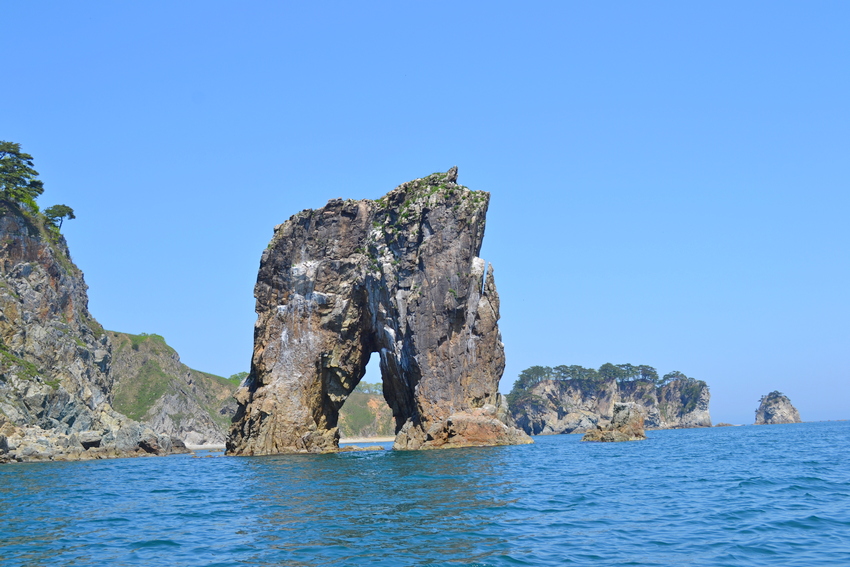
In 1994, the Institute established the largest marine natural history museum in Vladivostok (with a total storage area of over 400 m²). Its primary objectives are the maintenance of marine biological collections, as well as exhibition and educational activities. The Museum’s possesses the largest scientific collection of marine fauna and flora in the Russian Far East. The Museum’s materials are used for both fundamental and applied research, and also for educational and training purposes. Since 2016, the Museum has been working with families on the “Science on the Road: PriMorye” project, which aims to engage residents of the city and the region in the study and conservation of marine biodiversity. A key resource for the project is the website http://naukamoredeti.ru/.


Five years after the foundation, the Institute began publishing the journal Biologiya Morya (along with its translated version Russian Journal of Marine Biology that is now an internationally recognized journal). The journal’s recent history can be traced through numerous publications both in the journal itself and in the media. Since 2004, it has been publicly available in the Russian Science Citation Index (RSCI) database, fully compliant with copyright laws. The number of scientists publishing their articles in the journal has increased. Over the past five years, the leading contributions have come from researchers at the NSCMB FEB RAS (115), Far Eastern Federal University (40), Moscow State University (26), A.O. Kovalevsky Institute of Biology of the Southern Seas, RAS (25), and the V.I. Il’ichev Pacific Oceanological Institute FEB RAS (14). Every year, numerous foreign authors send their manuscripts to the journal. While in its early days the journal only published translations of articles, authors now submit original materials. Between 2019 and 2023, the journal published papers by authors from China (15), India (9), Iran (7), Turkey (4), Tunisia (2), Vietnam (4), Egypt (2), Algeria (1), and other countries. The journal remains relevant and authoritative, providing a platform where Russian and foreign biologists can present their findings to the international audiences, thus, contributing to the advancement of science. Abstracts, figures, reference lists of authors’ works, and other information are available at https://link.springer.com/journal/11179/volumes-and-issues. The contents of other issues of the journal (starting from 1996, vol. 22) are available on the publisher’s website: https://www.pleiades.online/en/journal/marbio, and since 2000 (vol. 26) at https://link.springer.com/journal/11179/volumes-and-issues. In June 2024, Igor Yuryevich Dolmatov, the Director of NSCMB FEB RAS and a Corresponding Member of the Russian Academy of Sciences, became Editor-in-Chief of the Russian Journal of Marine Biology.
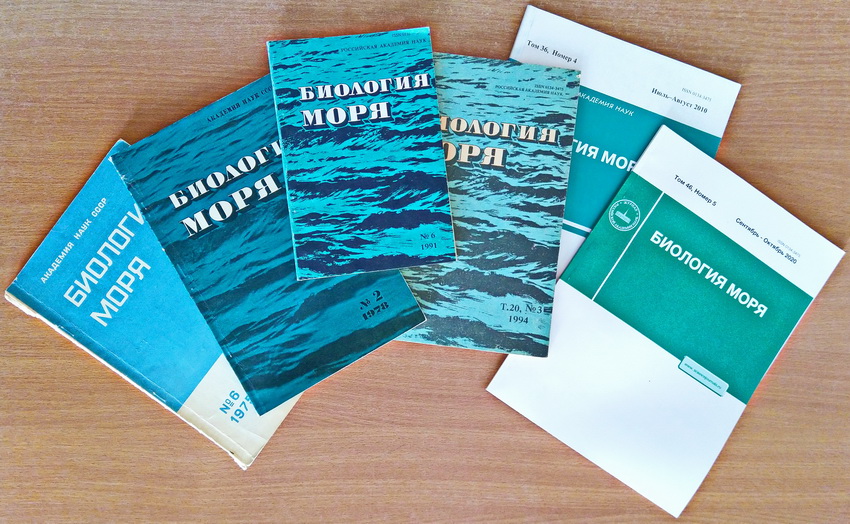
When comparing the Institute’s early years with its more recent history, it is clear that its strategic focus has remained unchanged. The Institute experienced intensive development, final formation, and flourishing under the leadership of Academician Vladimir Leonidovich Kasyanov (1940-2005), an outstanding Russian scientist known to the international scientific community for his fundamental work on the comparative embryology of marine organisms, his contributions to the study and conservation of marine life, and his research on the evolution of the biosphere and climate change. V.L. Kasyanov began assisting Aleksey Viktorovich Zhirmunsky in his leadership of the Institute in 1977, when he became his deputy. During the most difficult years for the entire country, Kasyanov not only saved the Institute but also made it one of the most dynamic and productive institutes of the RAS.

After the untimely death of V.L. Kasyanov, Academician Andrei Vladimirovich Adrianov took over the Institute. Under his initiative and direct supervision, another significant area of scientific research emerged: the study of the deep-sea regions. A remotely operated underwater vehicle Comanche 18, capable of diving to depths of 6000 m, was acquired. The Institute organized and participated in numerous international expeditions to explore the ocean’s abyss.
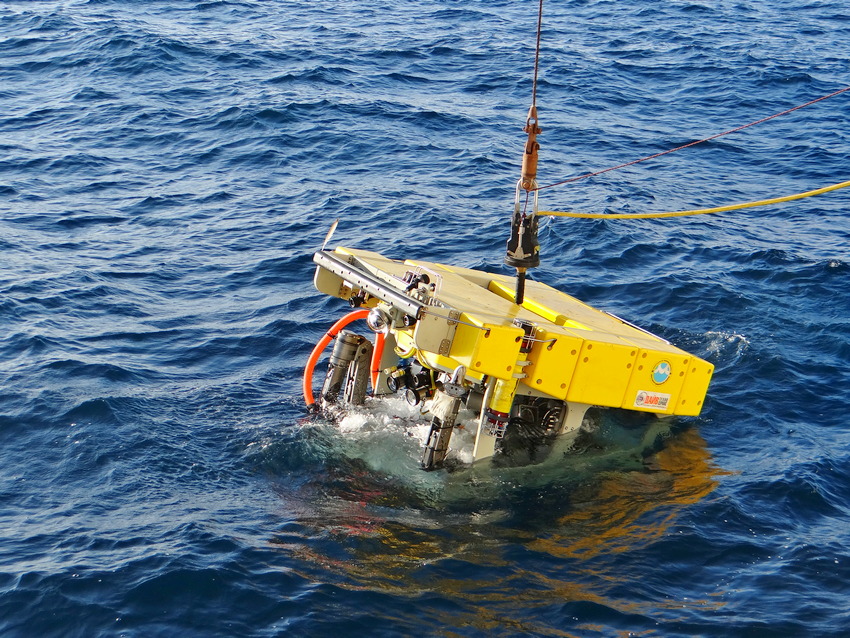 |
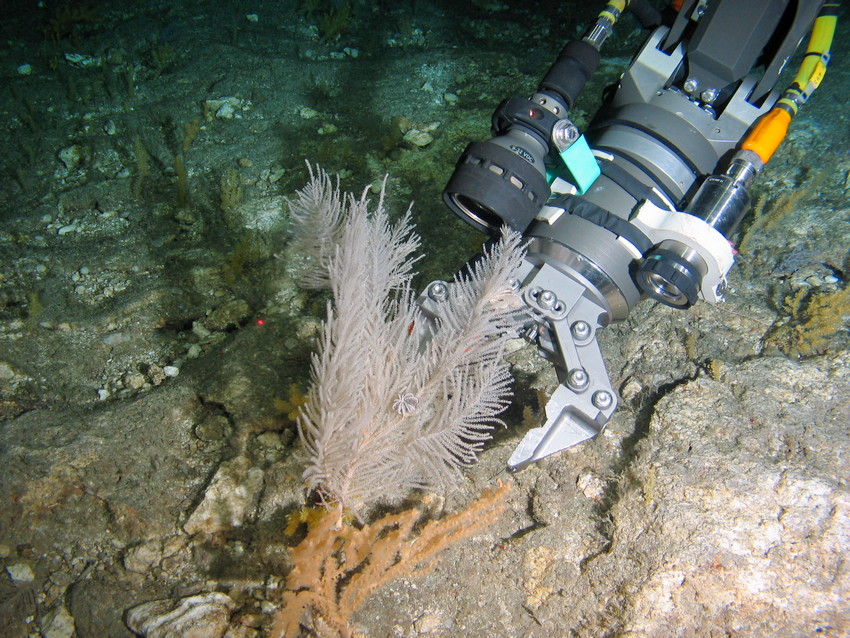 |
The Center established in September 2016 significantly expanded the scope of research conducted. Currently, the proportion of young scientists exceeds 30%. Significant attention is paid to youth policy: since 2019, four youth laboratories have been created as part of the National Project “Science and Universities.”
Numerous marine biological and technical studies have been successfully completed, as well as a number of special programs and government assignments. The results of NSCMB FEB RAS research are presented in numerous scientific publications. Researchers have published approximately 7000 scientific papers and 400 monographs. Since 1972, about 4300 publications have been indexed on international databases and cited in over 28 000 articles more than 42 000 times. The NSCMB FEB RAS has a h-index of 68, according to the Web of Science international bibliographic database.
The Center’s scientific interests and research strategy have always encompassed the World Ocean as a whole, with particular emphasis on the Far Eastern seas. From its origin, the Center has set a high standard for basic research. The following are among the most important results of its fundamental scientific research.
Basic Research
Study of the fauna and flora, ecology, and productivity of marine life in the Far Eastern seas and adjacent Pacific Ocean waters
Since our earliest years, we have conducted expeditions for the comprehensive study of various marine areas. Since the 1980s, expeditions extended to the northern latitudes and tropical regions of the Pacific, and later to the Indian and Atlantic Oceans. Of particular note are the long-term expeditions, unparalleled in terms of the scope of their study area, led by O.G. Kussakin, then a Candidate of Sciences and later Academician Kussakin. These expeditions provided the first large-scale study of the littoral zone of the Russian seas, from the Eastern Arctic and the coast of Chukotka to the Korean Peninsula.
In a relatively short time period (from 1967 to the mid-1980s), unique data on the littoral marine life across vast coastal marine expanses were obtained. O.G. Kussakin organized, led, and directly participated in more than 70 expeditions to remote coastal areas of the Far East. Students and postgraduate students from the Far Eastern State University were often invited. Faculty members, hydrobiologists, and parasitologists from the University also played a significant role in coastal biology research. Many of the participants in these expeditions became renowned specialists and currently work at the NSCMB FEB RAS. Unique materials on the littoral fauna and parasitology of coastal marine animals were collected. Lists of more than 6000 species of marine animals from Peter the Great Bay and the littoral zones of Russia’s Far Eastern seas have been published. The results of such labor-intensive research are lacking even for smaller regions and are unparalleled not only in Russia but also in international literature. In the 1990s, it became clear that an inventory of the fauna and flora of the Far Eastern seas in general, and Peter the Great Bay of the Sea of Japan in particular, was an essential issue. The List of Species of Animals, Plants, and Fungi of the Littoral Zone of the Far Eastern Seas of Russia was published (1997), followed a year later by the Taxonomic Catalog of the Biota of Peter the Great Bay, Sea of Japan (1998). O.G. Kussakin, as the author and co-author of several volumes of the Keys to the Fauna of the USSR, played a crucial role in developing the guidelines for the future Biota of the Russian Waters of the Sea of Japan. Personally knowing almost all the leading taxonomists in Russia, he gathered the proposed team of authors. The final decision to publish Biota was made in 1998. Although the phrase “northwestern Sea of Japan” had become established in Russian hydrobiology, the publication was renamed Biota of Russian Waters of the Sea of Japan. The project’s main achievement was the publication of 11 volumes devoted to several groups of crustaceans, sea spiders, prokaryotes, phoronids, brachiopods, polycladids/turbellarians, oligochaetes, leeches, echiurids, reptiles, and dinoflagellates. Many groups, considered well-studied (bivalves, cnidarians, decapods, and others), nevertheless require serious taxonomic and faunistic revisions using type material.
Part of the expedition’s research includes a large-scale inventory of the marine life of all the Russian Far Eastern seas and adjacent Pacific Ocean waters. The collection material housed at the NSCMB FEB RAS Museum consists of shelf and littoral samples from Russia’s Far Eastern seas, as the Institute has conducted hydrobiological research for many years in the Sea of Japan, the Sea of Okhotsk, and the Bering Sea, as well as in the Kuril Islands region. However, the geographic range of the collection is much broader: a significant portion of the samples was from the coastal waters of Vietnam, while the repositories also contain samples from the Indian and Atlantic Oceans, as well as from Antarctica and other regions of the World Ocean. In addition to shelf collections, in recent years the collection has been actively expanded with materials from deep-sea regions of the northwestern Pacific Ocean, including the deep-sea basins of the Sea of Japan and the Sea of Okhotsk, the Pacific abyssal plains, and oceanic trenches (depths ranging from 300 to 9504 m). Currently, the collection contains over 50 000 cataloged items and approximately three-fold that amount of unprocessed material. The exact number of objects in the collection cannot yet be determined, as processing and sorting are ongoing.
Leading hydrobiologists O.G. Kussakin, E.I. Shornikov, V.I. Lukin, V.G. Chavtur, A.I. Kafanov, V.G. Tarasov, V.I. Fadeev, G.V. Konovalova and the scientific teams they led carried out research on many taxa of marine organisms, conducted biogeographical zoning, and proposed explanations for the pathways by which shallow- and deep-sea marine life forms in the World Ocean. The Institute of Marine Biology was not created as a Far Eastern analogue of the Zoological and Botanical Institutes of Leningrad, as was repeatedly emphasized by its founder, A.V. Zhirmunsky. The following main areas of research were approved: firstly, experimental research in ecological and evolutionary biology, genetics, cytology, physiology, and molecular biology; secondly, the study of the composition, distribution, and biology of fauna and flora, the biological productivity of coastal zones of the Far Eastern seas, and the conditions for the reproduction of commercial species. The bulk of the scientific effort focused on three interrelated issues: the dispersal of organisms in the sea (chorology); adaptations that facilitate the dispersal and reproduction of marine animals and plants (ecology); and the elucidation of the mechanisms of microevolutionary processes. Nevertheless, the description of new taxa has been part of the Institute’s mission since its foundation.
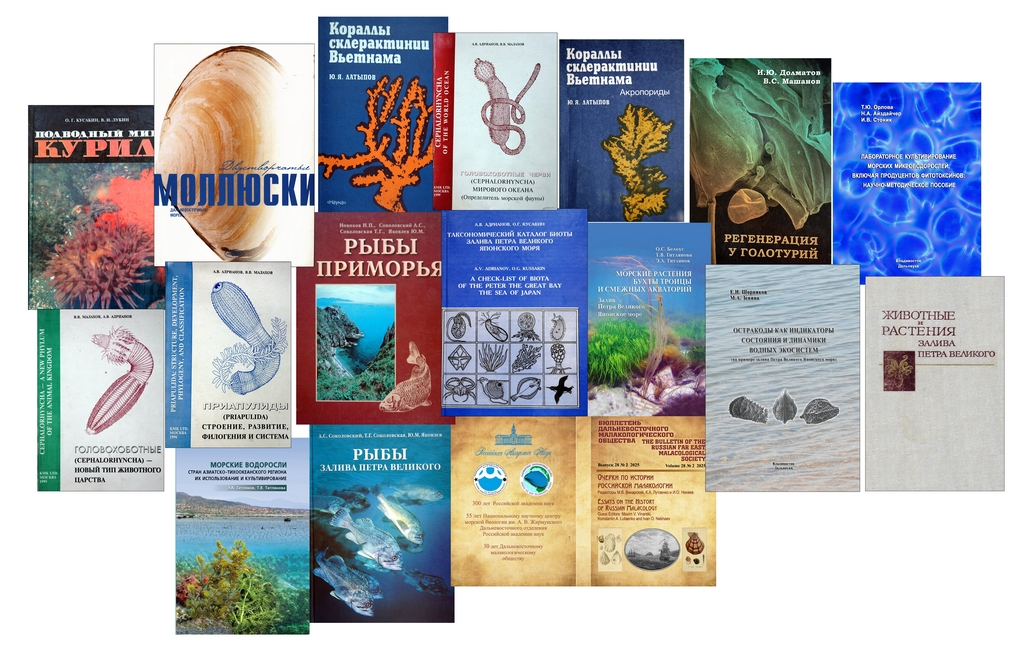
From 1967 to the present (as of September 2025), the Center’s scientists have described 2012 taxa, including 1585 new to science species, 249 new to science genera, and 71 new to science families with super- and subfamilies, tribes, and subtribes. The greatest number of species (as well as taxa in general) were described by E.I. Shornikov (445) and O.G. Kussakin (197). A total of 114 staff members are authors or co-authors of new taxa. The majority of new species and subspecies are animals; 8 species of fungi, 35 species of algae and higher plants were also described. New taxa have been described from most animal phyla, including sponges, cnidarians, flatworms, nemerteans, rotifers, chaetognaths, kamptozoans, annelids, bryozoans, phoronids, mollusks, tardigrades, nematodes, kinorhynchs, priapulids, arthropods, echinoderms, and chordates. The greatest number of species and subspecies has been described among crustaceans - 779, followed by mollusks with 195 species, annelids with 83 species, and nematodes with 78 species. Twenty-eight extant and 11 fossil fish species and subspecies have been described. The scientific community is well known for its specialists in fossil corals (E.V. Krasnov, B.V. Preobrazhensky, Yu.Ya. Latypov) who discovered a significant number of new taxa of various ranks. A total of 162 species and subspecies of fossil marine animals have been described. One of the research areas is marine parasitology: 37 species of marine animal parasites, ranging from microsporidia to higher crustaceans has been described. A.V. Rybakov, a recognized pioneer in the study of this group, was one of the authors of several families of rhizocephalan crustaceans. Although the Center’s focus is primarily on the marine environment, its researchers have described 16 species of terrestrial organisms and 12 species of freshwater organisms. An evident confirmation of their achievements is the fact that approximately 250 species and genera of various marine organisms, bacteria, plants, and animals have been named after them. The undisputed leader in this field is one of the Institute’s founders, Academician O.G. Kussakin, after whom his colleagues and apprentices have named 33 taxa of living organisms. Among Russian academic institutions, the NSCMB FEB RAS ranks second in the country in terms of the number of described taxa of modern marine organisms, after the Zoological Institute RAS. However, in terms of taxonomic scope (prokaryotes, algae, fungi, animals), the Center has no equal.
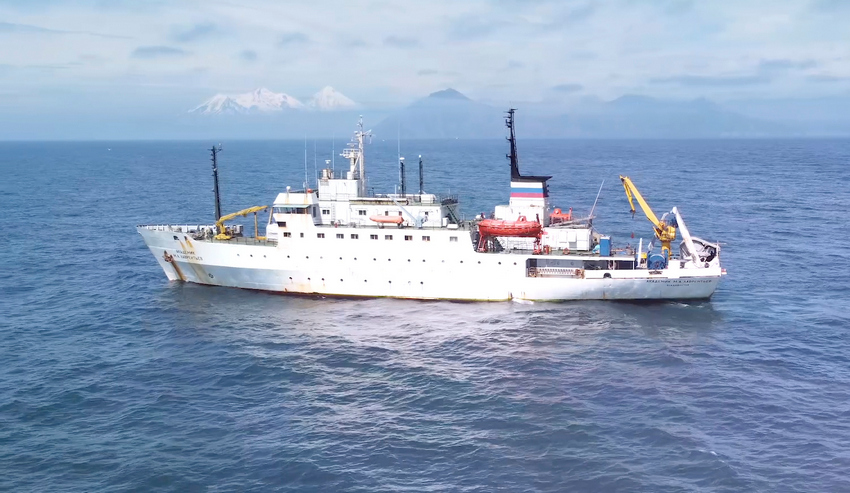
In recent years, much attention has been paid to deep-sea research in the World Ocean. Between 2010 and 2016, four joint deep-sea expeditions were conducted in a vast region of the northwestern Pacific Ocean in collaboration with German institutes (the Zoological Institute, the Hamburg Museum, and the Center for Marine Biodiversity), alternately aboard the Russian R/V Akademik M.A. Lavrentyev and the German R/V Sonne (both old and new). An assessment of biodiversity was carried out in the deepest part of the Sea of Japan (SoJaBio, 2010; to a depth of 3660 m), in the area of the Pacific abyssal plain adjacent to the Kuril-Kamchatka Trench (KuramBio I, 2012; to 6000 m), in the deep-water Kuril Basin of the Sea of Okhotsk, and on the oceanic slope of the Kuril Islands (SokhoBio, 2015; to 4700 m), and in the Kuril-Kamchatka Trench (KuramBio II, 2016; to 9500 m).
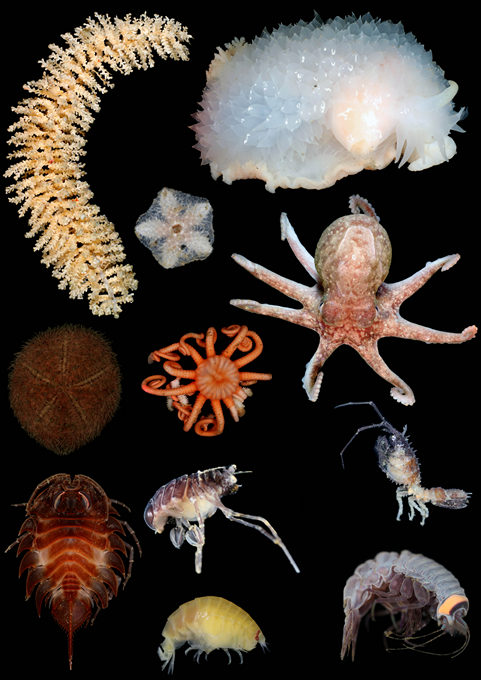
We conducted the first comprehensive study of collections from a vast deep-sea region with depths ranging from 500 to 9500 m. We revealed impressive biodiversity of the benthic fauna in a region previously considered one of the best studied in the World Ocean. Based on collections from a dozen expeditions of the R/V Vityaz in these areas during the 20th century, approximately 550 species had been described. Our materials increased the benthic species lists for the four studied areas six- to twenty-fold. Of the more than 4500 species collected by our expeditions, more than half were new to science. Data on the composition and distribution of benthic fauna in this vast region, which includes interconnected deep-sea basins differing in geomorphology, hydrology, and degree of isolation, make it possible to elucidate the mechanisms regulating biodiversity from the local to regional level, as well as the effect of isolation on speciation and species distribution processes. The data obtained allow proposing hypotheses about the role of North Pacific deep-sea fauna in shaping the modern composition of global deep-sea fauna. The results have already been presented in more than 200 publications. In a series of studies on the deep-sea basins of the Sea of Japan and the Sea of Okhotsk, as well as the Pacific abyssal plain and the ultra-abyssal zone of the Kuril–Kamchatka Trench, more than 60 new-to-science species, 11 new genera, and two families were described, and taxonomic revisions of poorly studied taxa were conducted. New biogeographic and ecological data were obtained for many known species and supraspecific taxa, which allowed addressing questions related to the origins of deep-sea fauna in various regions of the northern Pacific Ocean, species dispersal routes, the degree of endemicity of the fauna of the studied deep-sea regions, and their relationships with faunas of other regions of the world’s oceans. The results of these studies are presented in four special issues of the journals Deep Sea Research Part II: Topical Studies in Oceanography (2013, 2015, 2018) and Progress in Oceanography (2020). In addition, a joint collective monograph on the biogeography of the deep-sea fauna of the northwestern Pacific Ocean was published in 2020: Biogeographic Atlas of the Deep NW Pacific Fauna (edited by Saeedi H. and Brandt A.). More than 20 Russian specialists from scientific centers in Vladivostok and Moscow, including nine regular participants from the NSCMB FEB RAS, and also specialists from Hamburg, Frankfurt, Wilhelmshaven, and Munich, Japan, Korea, Spain, Poland, France, Switzerland, the Czech Republic, Mexico, and Australia, took part in the joint expeditions.
From 2020 to 2023, these works were consolidated into a large-scale scientific project in priority areas of scientific and technological development: Fundamental Issues of Study and Conservation of Deep-Sea Ecosystems in Potentially Ore-Bearing Areas of the Northwestern Pacific Ocean, carried out within the framework of the Russian Federation state program Scientific and Technological Development of the Russian Federation. The combined effort of many specialists enabled intensified research, a comprehensive description of deep-sea ecosystems, and a significant synergistic effect expressed as the development of new methods and approaches to studying the world’s oceans, and also as the cutting-edge works in biochemistry, geochemistry, pharmacology, and related fields. The project was implemented in seven main areas: description of bottom landscapes and biological diversity; biogeochemical research; microbiological research; molecular genetics and cytological research; biochemical research; pharmacological research; and environmental protection. The project investigated the diversity, formation, and functioning of deep-sea ecosystems in potentially ore-bearing areas of the Bering, Okhotsk, and Japan Seas, as well as adjacent areas of the northwestern Pacific Ocean. The formation of their biological diversity was studied, and the potential and technologies for conservation of unique deep-sea ecosystems were identified in the context of potential exploitation of mineral deposits concentrated in these areas. Between 2019 and 2021, a comprehensive study of the deep-sea ecosystems of the Emperor Seamounts (northern Pacific Ocean) was organized and conducted for the first time in world’s science. Using a remotely operated underwater vehicle, new data were obtained on environmental factors, mineral resources, and the distribution of key taxa in the vulnerable marine ecosystems of these seamounts. In 2016 and 2018, vertical zoning and descriptions of the Piip Volcano ecosystems in the Volcanologists Massif in the Bering Sea were carried out. Communities in the methane seep areas on the Koryak slope of the Bering Sea were studied in 2018 and 2021. The morphology and anatomy of deep-sea organisms were examined to identify their adaptive mechanisms and to demonstrate structural features associated with survival in extreme habitats. Trophic relationships and feeding strategies in deep-sea benthic communities were elucidated.
Study of Phytoplankton in the World Ocean
The NSCMB FEB RAS is the only scientific organization in the Russian Far East monitoring the toxicological safety of Far Eastern waters and marine products. Researchers have been studying harmful microalgal blooms (HABs), also known as “red tides,” for many years. These toxic phytoplankton blooms can negatively impact marine communities and pose a health hazard to humans. Under conditions of significant climate change and negative anthropogenic pressure on marine ecosystems, the frequency and scale of these blooms have increased, leading to declines in fisheries and recreational potential, reductions in mariculture productivity, and losses in biodiversity. All of this underscores the urgency of expanding the research on toxic phytoplankton and establishing a system for continuous monitoring of these phenomena to ensure the toxicological safety of Far Eastern marine waters and marine products.
To achieve these goals, continuous monitoring of phytoplankton bloom events in the waters of the Russian Far East has been carried out since the 1990s. A Center for Monitoring Harmful Algal Blooms and Biotoxicity in Coastal Marine Waters, a Center for the Cultivation of Marine Microalgae, and the first Russian Core Shared Research Facility, the Marine Biobank, have been established, holding a unique collection of biomaterials from phytoplankton species in the Far Eastern seas. Scientists from the Kamchatka branch of All-Russian Research Institute of Fisheries and Oceanography have participated in this scientific collaboration. This infrastructure and highly qualified research team make it possible to address not only scientific but also practical issues of toxicological safety, as demonstrated, for example, by the active participation of FEB RAS scientists in studying the causes of a large-scale HAB outbreak in Kamchatka waters in the fall of 2020, which sparked widespread public concern. The study of potentially toxic microalgae, both in nature and in laboratory conditions, and phycotoxins is necessary to ensure the toxicological safety of the population, prevent economic damage, and create a competitive and reliable market for seafood produced in the region.
Observations and Monitoring
Thanks to the long-standing efforts of scientists, Vostok Bay of Peter the Great Bay, Sea of Japan, where regular observations have been conducted for 50 years, has become one of the best studied marine bodies of water in the Russian Far East in terms of knowledge about the composition and structure of marine communities. In 2022, as part of the Federal Scientific and Technical Program for Environmental Development of the Russian Federation and Climate Change for 2021–2030, approved by a decree of the Government of the Russian Federation, a comprehensive study was launched to assess changes occurring in Vostok Bay communities under the climate change observed in recent decades.
The NSCMB FEB RAS is conducting studies under the topic “Assessing Phytoplankton Bioproductivity as the Main Mechanism for Carbon Dioxide Sink at the Ocean–Atmosphere Boundary in the Coastal Waters of the Far Eastern Seas” within the framework of an agreement with the P.P. Shirshov Institute of Oceanology, Russian Academy of Sciences, for the implementation of the State’s most important innovative project “Unified National System for Monitoring Climate-Active Substances.” The work is being carried out at several model sites. Since the project’s inception, the research in the Sea of Japan has been conducted in Amur Bay and Vostok Bay, which differ in their hydrological regimes and the level and forms of anthropogenic impact. Our field stations have fostered large scientific communities of biologists. Obtaining reliable data on temporal trends in natural communities will help identify general patterns of change in the marine ecosystems of the southern Russian Far East.
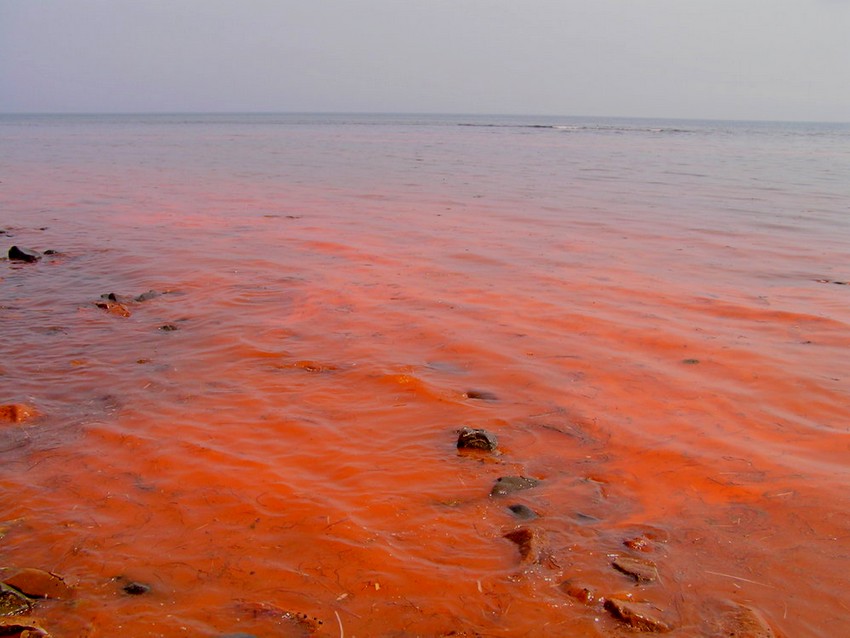
In 2025, a special issue of the Russian Journal of Marine Biology, entitled “50 Years of Research”, was published, bringing together articles on the study of marine life in Vostok Bay.
Research on the Adaptation, Ontogenesis, and Evolution of Marine Organisms
Molecular biological and cytological research. Studying the mechanisms of restorative processes during the regeneration of marine organisms, including the methods and cellular sources of regeneration, is one of the most important areas of research conducted exclusively at the NSCMB FEB RAS. The ability to restore the integrity of the body after injury, loss, or natural wear is a fundamental property of living beings. Many animals can completely or partially regenerate muscular structures. Different species exhibit specific characteristics of this process at the cellular and molecular levels. Interest in regeneration as a biological phenomenon, in addition to purely theoretical considerations, is driven by its practical significance. Species of sea lilies, starfish, brittle stars, and holothurians have been comprehensively studied. Understanding the mechanisms of tissue regeneration, cellular genome reprogramming during the formation of lost organs, and the ability to control this process may enable the application of identified patterns in developing the foundations and technologies of regenerative medicine.
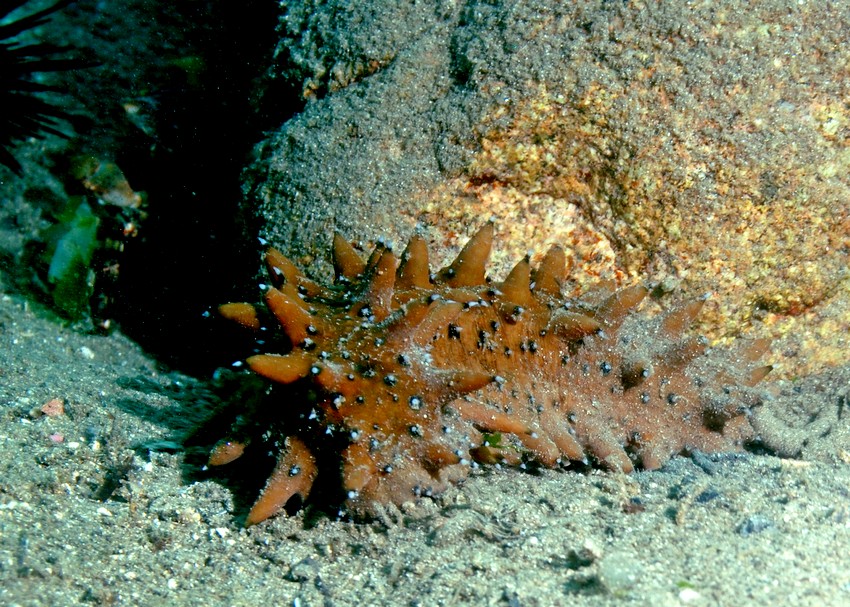 |
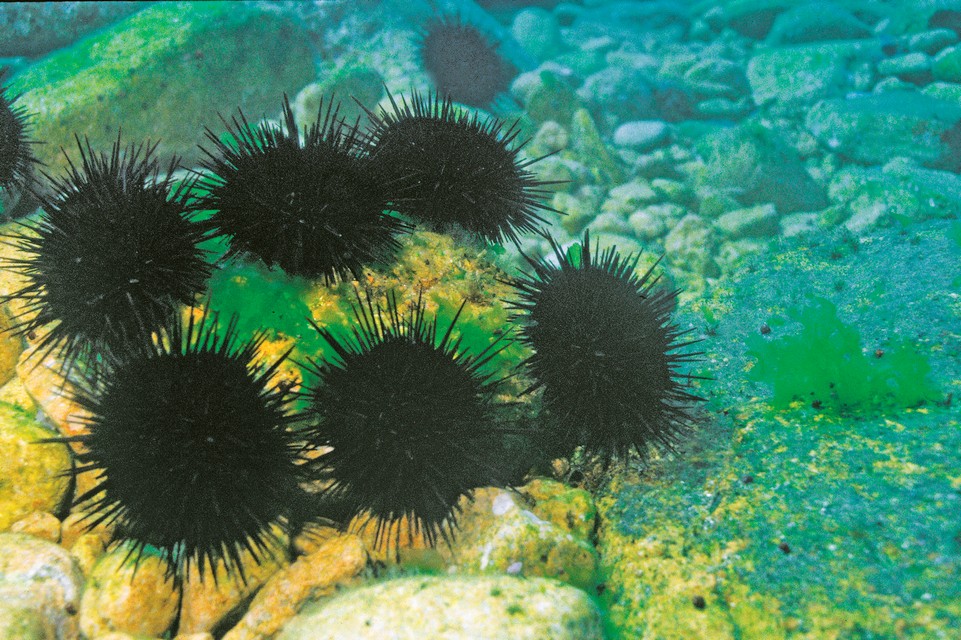 |
Research in the Fields of Molecular Genetics, Biochemistry, and Biotechnology of Marine Organisms
The Center is the only scientific organization conducting large-scale research on the lipidome of marine organisms. Research on lipids of marine organisms is an important tool for studying matter fluxes in deep-sea ecosystems, as well as the metabolic characteristics and adaptations of organisms. Lipids are among the most important organic compounds: they form the structural basis of cell membranes, are used by animals for energy storage, and are, therefore, important indicators of their ecology and biochemistry. The profiles of molecular lipid species in many marine organisms remain poorly understood. Thanks to the rapid development of chromatography methods combined with mass spectrometry, detailed information on the composition of lipid classes and fatty acids within total lipids and individual lipid classes is becoming increasingly available, not only at the family/genus level but also at the genus/species level. The data are used to address a wide range of problems: determining lipid biosynthesis pathways, chemotaxonomy, assessing the influence of biotic and abiotic factors, and studying embryogenesis, ontogenesis, and food chains.
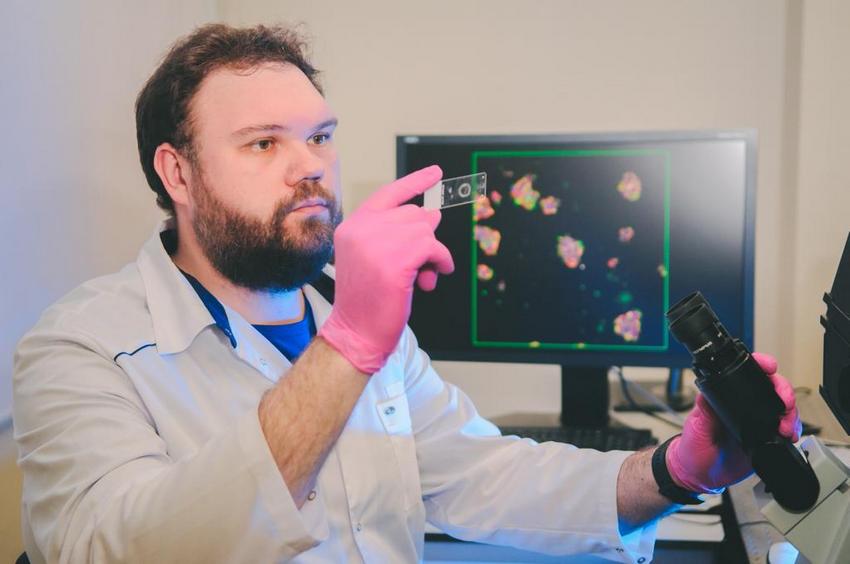 |
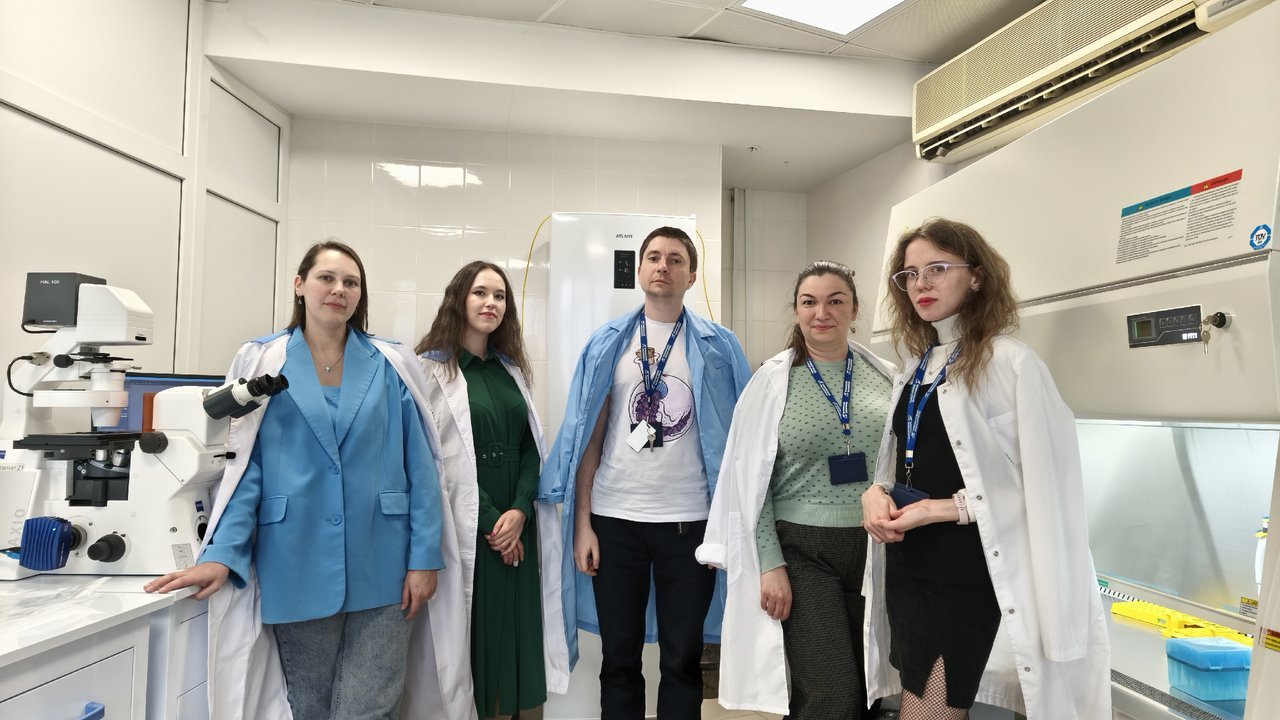 |
Applied Research
Development, Research, and Implementation of Lipid-Based Pharmacological Agents
The research team at the Laboratory of Pharmacology of the NSCMB FEB RAS is studying marine organisms, including deep-sea species, for the presence of unique biologically active compounds. The goal is to develop novel drugs with neurotropic, immunomodulatory, trophic, and detoxifying effects from marine organisms. Research is underway based on the experimental pharmacology of pathological conditions such as peripheral and central neurotrauma, tonic and neuropathic pain syndromes, neuroinflammation, and spontaneous and induced neurodegenerative processes.
The following biologically active supplements have been developed: Lipidomarin, Omegamarin, Neurolipid, and Oleveita.

Technology for Recovery and Maintaining Commercial Kamchatka Crab Stocks in Waters of the Russian Far East
Promising areas include the development of technologies for cultivating various species of microalgae and crabs. A technology for rearing viable juveniles on an industrial scale has been developed. Among the key target species is the red king crab, Paralithodes camtschaticus, which is in high demand on the market. The unstable natural reproduction of this species requires the use of artificial breeding measures. Using this technology, it is possible to fully restore commercial stocks of coastal crabs in the territorial waters and special economic zones of Russia’s Far Eastern seas. Among the most popular species farmed in mariculture are the Japanese mitten crab, Eriocheir japonica, along with its close relative, the Chinese mitten crab, E. sinensis. The development of mariculture in Russia requires detailed knowledge of marine organisms. The NSCMB FEB RAS manages a mariculture experimental site for testing these technologies. A technology for releasing crab juveniles into their natural habitat, creating an artificial biotope, has been developed. This technology is supported by a specialized suite of integrated biotechnologies. It can be applied all along the coast of Russia’s Far Eastern seas and makes it possible to restore the historical level of Kamchatka crab bioresources and achieve sustainable commercial harvesting. Using this combination of technologies and management approaches, it is possible to develop coastal mariculture in the Russian Far East, increasing yields to the level of commercial marine bioresources and creating knowledge-intensive production and marine biotechnology clusters. The Center has partnered with leading marine biology institutions and universities in Shandong and Liaoning provinces (China). The team has an over 20-year experience of collaboration with international partners.
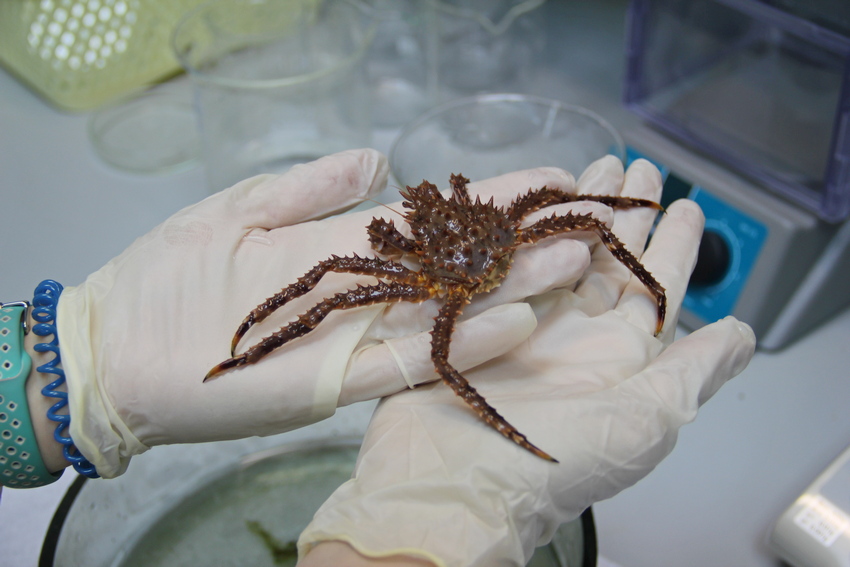 |
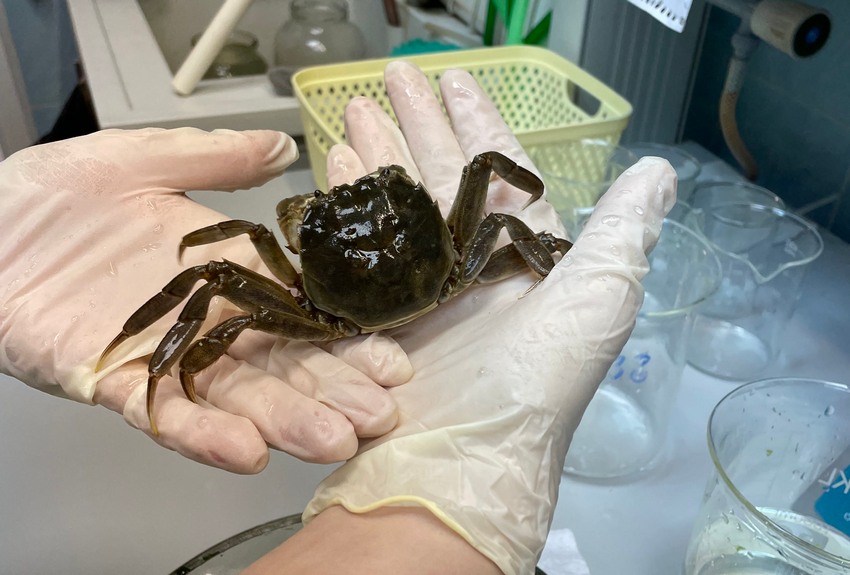 |
A large body of practical research at the NSCMB FEB RAS is focused on developing scientific foundations for the conservation, reproduction, and sustainable use of continental-shelf marine biological resources, and also technologies for ensuring the biological safety of marine waters and marine products. Promising areas include the search for and study of biologically active substances (BAS) from marine life, disease research in valuable marine organisms, the development of new genetic methods for aquaculture (including studies on fish growth hormone genes), the study of molecular markers for assessing the physiological status of marine animals, and genetic studies of natural populations of commercial aquatic organisms.
Our Scientists in Science and Nature
Science and Nature are two of the three most authoritative global scientific journals, and the vast majority of scientists worldwide consider it prestigious to publish their findings in them.
Back in the 1980s (almost unique for that time), our zoologist Yu.M. Yakovlev, together with American scientist Ruth Turner, first studied wood-boring marine mollusks, known in international literature as shipworms. These are members of the wood-boring bivalve family, which cause serious damage to wooden marine structures. In the teredinid bivalve Zachsia zenkewitschi, which lives in the rhizomes of seagrasses, a phenomenon called male dwarfism was discovered, which extremely rarely occurs in bivalves in general (up until then, only a few cases had been described). Life-history studies of Zachsia zenkewitschi, conducted at the Vostok Marine Biological Station in the Soviet Union, revealed that representatives of this species exhibit pronounced sexual dimorphism. The discovery of dwarf “parasitic” males in bivalves was a sensation. Even today, Zachsia remains one of the most unusual bivalves (Science, 1983).
In 2007, a paper co-authored with German colleagues was published in Nature. It presented a study of the deep-sea benthic fauna of the Southern Ocean near Antarctica based on new data obtained by several ANDEEP expeditions in the deep Weddell Sea and adjacent areas (depths of 748–6348 m). A high level of biodiversity was revealed there: for example, the specialists discovered 674 species of isopods, of which 585 were new to science. Bathymetric and biogeographic trends varied between taxa. In groups such as isopods and polychaetes, a large number of “invaders” from the shelf zone were found in the bathyal zone. For other taxa, the fauna on the shelf and slope varied significantly. The deep-sea fauna generally showed closer relationships with other oceans, particularly the Atlantic, but primarily in taxa with high dispersal abilities such as foraminifera. Isopods, ostracods, and nematodes, while limited in distribution, include many endemic species known only from the Southern Ocean. These findings challenged previous views regarding the low biodiversity of the Southern Ocean’s deep-sea waters.
In July 2017, Science published an article titled “Multipotent peripheral glial cells generate neuroendocrine cells of the adrenal medulla.” In this study, an international team of scientists, including young researchers from the NSCMB FEB RAS (V.A. Dyachuk, Cand. Sci. (Biol), and D.G. Kamenev), discovered a new mechanism of adrenal cell specialization. The findings may help advance our understanding of the causes of pathological conditions in the adrenal glands such as neuroblastomas and pheochromocytomas.
In July 2025, the journal Nature published the results of an international expedition conducted in 2024 by the NSCMB FEB RAS and the Institute of Deep-Sea Science and Engineering, Chinese Academy of Sciences, with the participation of researchers from the P.P. Shirshov Institute of Oceanology RAS and the V.I. Il’ichev Pacific Oceanological Institute FEB RAS. Using the deep-sea manned vehicle Fendouzhe, the researchers discovered abundant communities of multicellular organisms relying on chemosynthesis in methane seepage areas at depths of up to 9533 m, on the bottom of the Kuril–Kamchatka and Aleutian trenches. These are the deepest-water communities known to date. Previously, communities dominated by specialized bivalves from the Japan Trench, discovered at a depth of 7434 m, were considered the deepest. The results of this work significantly extend current knowledge of the distribution of communities of reducing biotopes in the ocean. This study is important for understanding the functioning of marine ecosystems and the formation of aquatic communities in the least studied areas of the planet: deep-sea trenches.
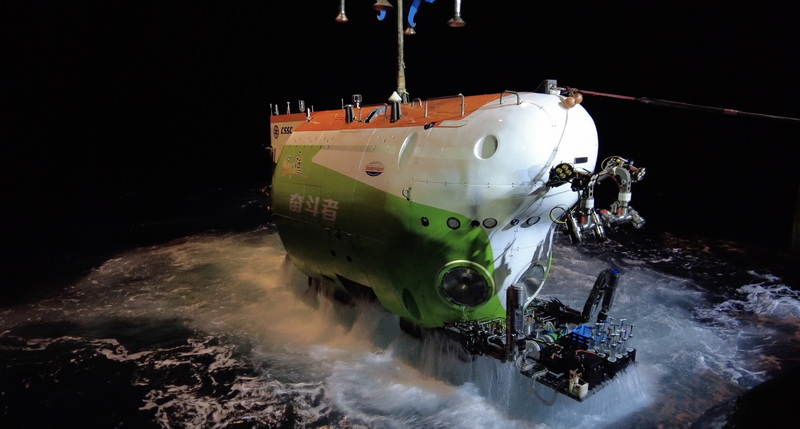
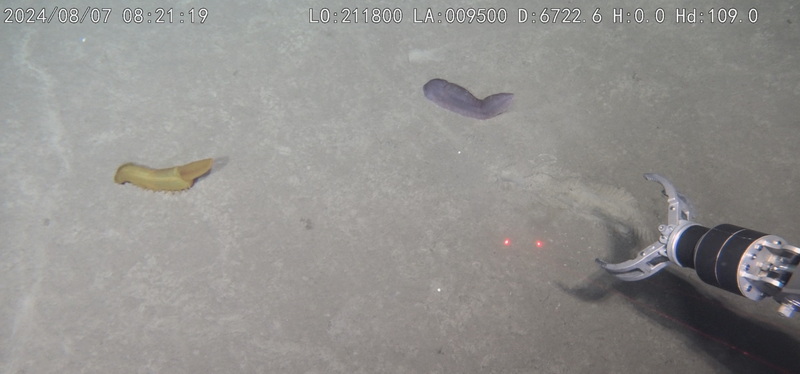
International Activities
From the very beginning, international scientific collaboration has been an important aspect of the Institute’s activity. The NSCMB FEB RAS currently maintains close partnerships with scientific and educational organizations worldwide. Establishing and developing such contacts in the late 1970s was a challenging issue. Cooperation with scientific institutions of the Chinese Academy of Sciences was significantly strengthened in 2024 through joint research with Russian scientists on deep-sea ecosystems. Since 1970, the Institute’s staff have co-authored more than 900 scientific articles with colleagues from 48 countries.
Established more than 55 years ago to study the biological diversity of Russia's Far Eastern seas, the Institute has grown, through the efforts of its scientists, into a modern research Center of international standing. The marine life of vast areas of the World Ocean, from the Arctic to Antarctica, is studied through targeted monitoring programs and integrated marine expeditions aboard research vessels. These results have been achieved through active collaboration and the involvement of undergraduate, graduate, and postgraduate students, as well as young scientists from research organizations, institutes, and leading universities in Russia, China, Vietnam, and several other countries. The top three collaborators are the Far Eastern Federal University (over 800 publications), the G.B. Elyakov Pacific Institute of Bioorganic Chemistry FEB RAS (approximately 230 publications), and the Federal Scientific Center of the East Asia Terrestrial Biodiversity FEB RAS (approximately 140 publications).
Times and people change, but one thing remains constant: the highest level of scientific activity. We are, above all, the history of our veterans whose names are woven into the fabric of the A.V. Zhirmunsky National Scientific Center of Marine Biology FEB RAS. Publications by our scientists in highly cited, quartile-ranked journals issued by world’s leading publishers demonstrate the strength of our scientific potential. In 2025, our anniversary year, we have a rich scientific program scheduled. We also have a tradition of honoring those who stood at the origins of science by holding conferences to commemorate them. This tradition continues every two years with conferences dedicated to outstanding scientists who established science in the Russian Far East. One of the Institute’s key achievements in scientific, educational, and outreach activities is the unique 30-year history of the MAPEEG (Modern Achievements in Population, Evolutionary, and Ecological Genetics) symposia, held since 1995. These symposia, conducted in English, have attracted dozens of young scientists and specialists from the Russian Academy of Sciences, universities across Russia, and many other countries. The most recent MAPEEG symposium, held in 2025, concluded just on the eve of the NSCMB FEB RAS’s 55th anniversary.
Today, the NSCMB FEB RAS is a unique research complex that addresses pressing issues in biodiversity and ecology, molecular and cellular biology, biochemistry, genetics, developmental biology, pharmacology, and medicine at all levels of the organization of living matter. We successfully pursue all these areas in the interests of both the State and the scientific community. The Center’s scientific and educational activities have been recognized with high international rankings and authority and have received State’s prizes and awards. The standard established by the achievements of our founders and all those who stood with them at the Institute’s inception continues to be maintained at a high level, with ambitious plans for the future. We still have much to strive for, and we hope that our anniversary year will also become a year of new achievements.
